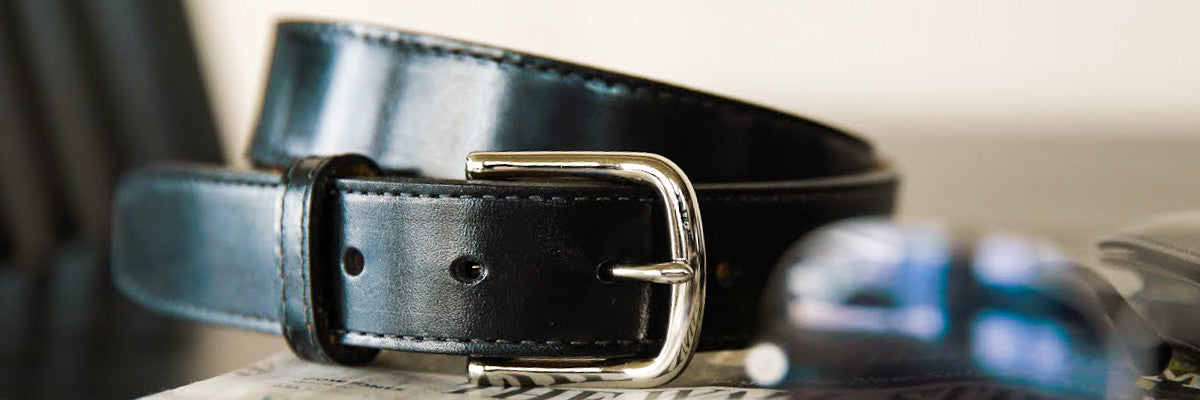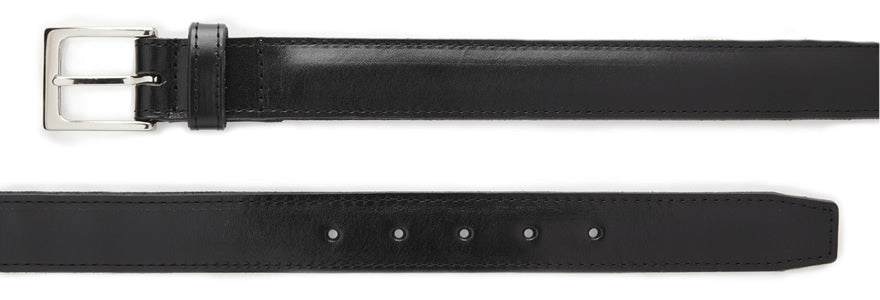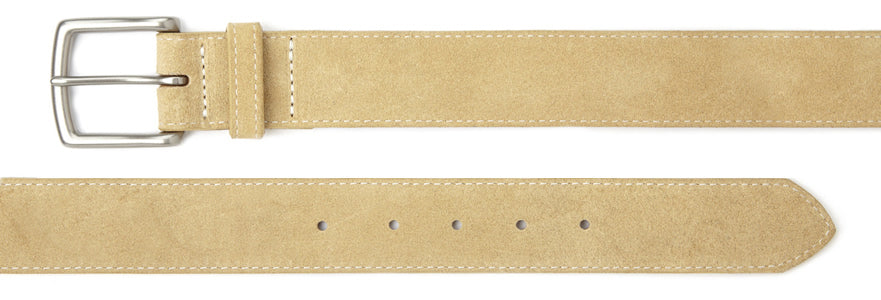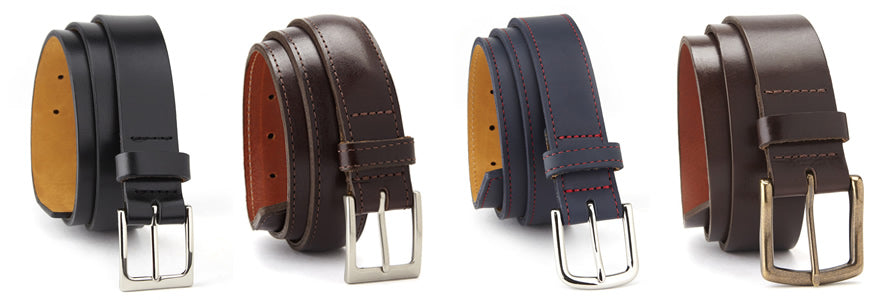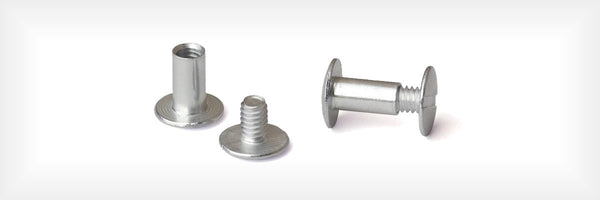- Continue Shopping
- Your Cart is Empty
How to Buy a Men's Belt: The Ultimate Guide
Pretty much every part a man's outfit gets significantly more attention than the lowly belt. It's treated more like a utility than a fashion piece, and as such, ends up being a product that's picked up as an after thought, rather than one that's sought out.
In reality though, it should be just the opposite. If you're looking to differentiate yourself or make a statement, your belt should be one of the first places that you start.
A high quality brown or black belt will add a necessary touch to complete an outfit, while a colorful exotic or statement belt can become the centerpiece of the whole outfit.
In this guide, we'll walk you through how to choose the right belt for your specific situation.
Two Main Types of Belts
Belts typically fall into one of two categories: Dress Belts and Casual Belts.
Dress belts are more formal and are typically worn with suits and dressier types of attire. Casual belts are wider and less formal, and can be worn with jeans, shorts, and a multitude of other types of clothes.
Occasionally belts can be both dress and casual, but that's fairly rare.
We'll dig into the specifics of each type of belt, and what you should keep in mind when selecting your belt.
Dress Belts
Dress belts are definitely the more formal of the two types of belts we'll be covering in this guide.
Rule of Thumb
The biggest rule of thumb that you need to keep in mind when choosing a dress belt is that it should as closely match the shoes that you plan to wear as possible. In a perfect world, the belt would be made of the same material that the shoes are, but that's pretty rare, so instead focus on getting the colors close or the same.
Width
In addition, a dress belt should be between 1 1/4" and 1 3/8" in width and about an 1/8" in thickness. If the belt is any wider than that, then it's a casual belt and not dressy enough for your purposes.
Material
The material of the belt should be "full grain leather". If it says "top grain leather", "genuine leather" or just plain old "leather", then it's time to move on to the next belt. Those terms may sound like the belt is made of the best material, but they're unfortunately code for sub-standard grades of leather. Go with "full grain" and you can't go wrong.
Suede is another material that every once in a while crosses over from a casual belt to a dress belt. It's not going to be the most formal of dress belts, but if the situation is on the more casual side of the dressy spectrum, then it could be worth looking at. The same suede belt could also be used for casual dress too, so fairly versatile.
Cotton is not a dress belt material. Don't even consider it.
Finish
The finish on the leather should be shiny, so avoid any matte finishes. The shinier the finish, the better.
Many dress belts are feathered, or raised up in the middle with stitching, but some may be flat without stitching. There also shouldn't be any excessive decoration or patterning on the belt. The simpler, the better.
Buckle
The buckle of the belt should be polished and fairly minimalist without any additional or excessive styling. It should also be only one pronged.
As for buckle colors, polished gold goes well with brown or tan belts, and polished silver with black or navy belts. For other colors, feel free to contact us for our expert opinion.
No cowboy buckles. Period.
Reversible Dress Belts
A note on reversible belts: While it may seem like you're killing two birds with one stone by buying a reversible belt, they tend to fall apart very fast (you don't see many high quality reversible belts made by reputable belt makers), and often times the other side of the belt is visible during normal wear, so you'll end up with flashes of brown against your black pants.
Casual Belts
Casual belts have a lot less rules and more flexibility depending on the situation, so you can get away with the same belt for a lot of different scenarios, or have many different belts that you use with the same outfit.
Width
Casual belts are typically wider than formal dress belts, and range in widths from 1 1/4" to 1 3/4", with the most common size for jeans being 1 1/2". They can also be thicker than a dress belt, ranging in thickness from 1/8" to 3/4" thick.
Anything thicker than 3/4" and you're probably not going to be able to effectively bend it around your body anyway.
Material
Leather is, of course, the most common type of material for casual belts, and as we learned in the dress belts section, you should ALWAYS choose a "full grain leather" belt. This is actually even more important for a casual belt, if you can believe that, as many people wear their belt on a daily basis, and it will tend to break down quickly, unless it's made from full grain leather.
Suede is another type of material that is commonly used for casual belts. It's not quite as durable as full grain leather, but it typically has a full grain leather backing for extra strength and durability, and the nap on the front makes for a nice change from your standard leather.
Cotton is the last major material used for casual belts. It's going to be the most affordable of the materials, and is also considered the most casual of the three types of belts.
Cotton belts are unique in that they can use a standard D ring as a buckle, so the belt just folds over itself (which is also the most casual of all of the belts), or you can add a leather trim to the ends, and have the belt use a normal buckle with punched holes.
Finish
The finish on leather casual belts is typically less shiny and more matte than dress belts. They may or may not also have stitching, depending on your preference.
Buckle
As you might guessed, there are more buckle options for casual belts. While some belts have a polished buckle, especially statement belts that are meant to stand out, most casual belts have more of a burnished or matte finish to them.
In addition, casual belt buckle shapes can range from square with a roller to rounded, and may be more ornate than their dress belt counterparts.
Sizing
Belt sizing actually tends to be a bit confusing, as different brands and locations size their belts differently.
If you're shopping in a department store, you can just wrap it around your waist and make sure the length after the buckle is appropriate for the type of belt that you're purchasing.
Whereas if you're shopping online, some sites recommend that you purchase a size or two larger than your pants waist size, or take a tape measure to one of your existing belts, which does tend to get a little complicated.
At BeltCraft, we size based on the waist of the type of pants that you'll be wearing, so if you wear a size 34 pants waist, then you would order a size 34 belt.
Moral of the story here though is if you're in person, try it on, and if you're shopping online, then read the fine print on the website to size your belt correctly.
Care & Storage
If you happen to get your leather or suede belt dirty, the first thing you want to do is to use a soft rag with some warm water and see if you can wipe away the mark. If it's stubborn and won't come out with just water, then you may need to use some leather cleaner with the rag to give it a next level clean.
Once the mark or stain is gone, then you'll want to use a leather conditioner to replace the oils that the cleaner wiped away. Simply use a soft, clean towel and wipe on the conditioner, then let sit for 15-30 minutes until it's absorbed.
Now that your belt is back to good condition, you can store it either rolled up in a drawer or shoebox, or you can use a belt hanger so that it hangs flat in your closet.
The Essential Belts that You Should Own
While we're not advocating that you should have a different belt for every outfit, or even for every day of the week, there are a few quality, go-to belts that you should have hanging in your closet:
- Formal Black Dress Belt - This is an absolute must have belt for pairing with every black or grey pair of dress pants.
- Formal Brown Dress Belt - Following up immediately behind the black dress belt is a classic brown dress belt, for every pair of brown, tan, khaki or navy pants that you'll wear in your life.
- Casual Brown or Tan Leather Belt for Jeans - If you wear jeans or casual clothes every day, then this is going to be your most important belt to own. It's worth investing in this, as you'll be wearing it more than pretty much every other piece of clothing.
- Casual Cotton or Suede Belt - Once summer rolls around, shorts will replace jeans or casual pants, so you'll want a belt that's more suited towards that. A cotton or suede casual belt is perfect for pairing with shorts or linen pants, and is a great belt to keep on hand for such a situation.
- Unique or Statement Belt - This may not be quite an essential belt, but it's still worth mentioning. A statement belt is going to be a bit more flashy than your classic black and brown belts. It may be a blue leather belt with red stitching, a ferrari red belt with white stitching or a wide yellow suede belt. Rather than blending in, this belt is made to attract attention.
There are plenty of other belts that you could own on top of the ones mentioned, but if you're looking to get the essentials out of the way, then these should be the first items on your list.
Custom Belts
Sometimes you search and you search, and just can't find the perfect belt to match a specific pair of shoes or an outfit that you have planned. A lot of belt designs might be close, but just not exactly right.
At BeltCraft, we've created a special online tool to allow you to design your own belt, including material, stitching colors, buckle types, and more. Once you have your belt designed, then we'll handcraft it specially for you, and ship it directly to your home or office.
Custom belts are also great options for gifts, either as a gift card to allow someone to design their own, or for a group, such as a groomsmen gift.
Overall, if you're creative or just looking to add some uniqueness or personalization to your belt, then designing your own belt is a great option.
Conclusion
While choosing a belt may seem a bit intimidating at first, once you know some of the basic rules, it becomes a lot easier.
If you ever have a question about what belt to choose or need some expert assistance with pairing a belt and another product, please do not hesitate to contact us.
Otherwise, now is the time to shop our great pre-designed belts or take a crack at designing your own!

